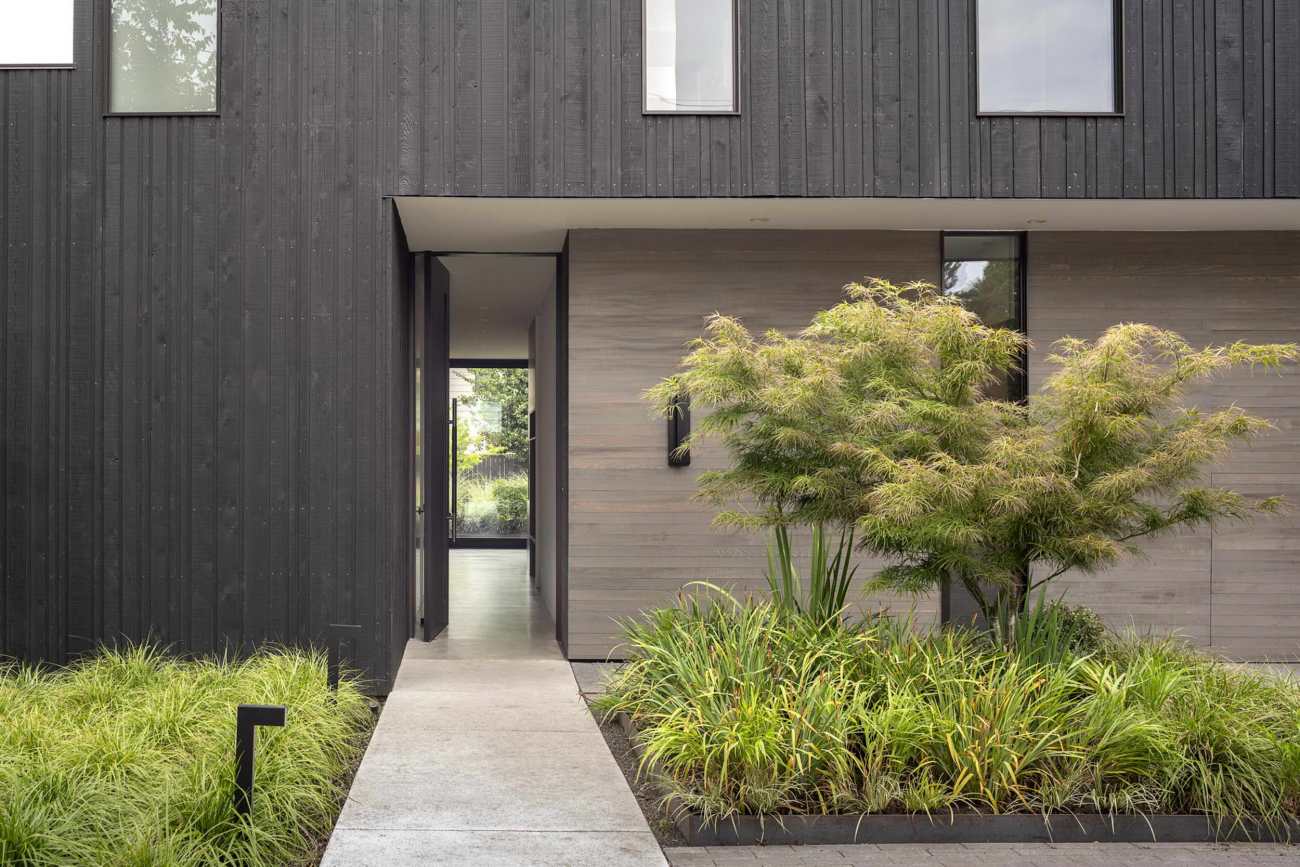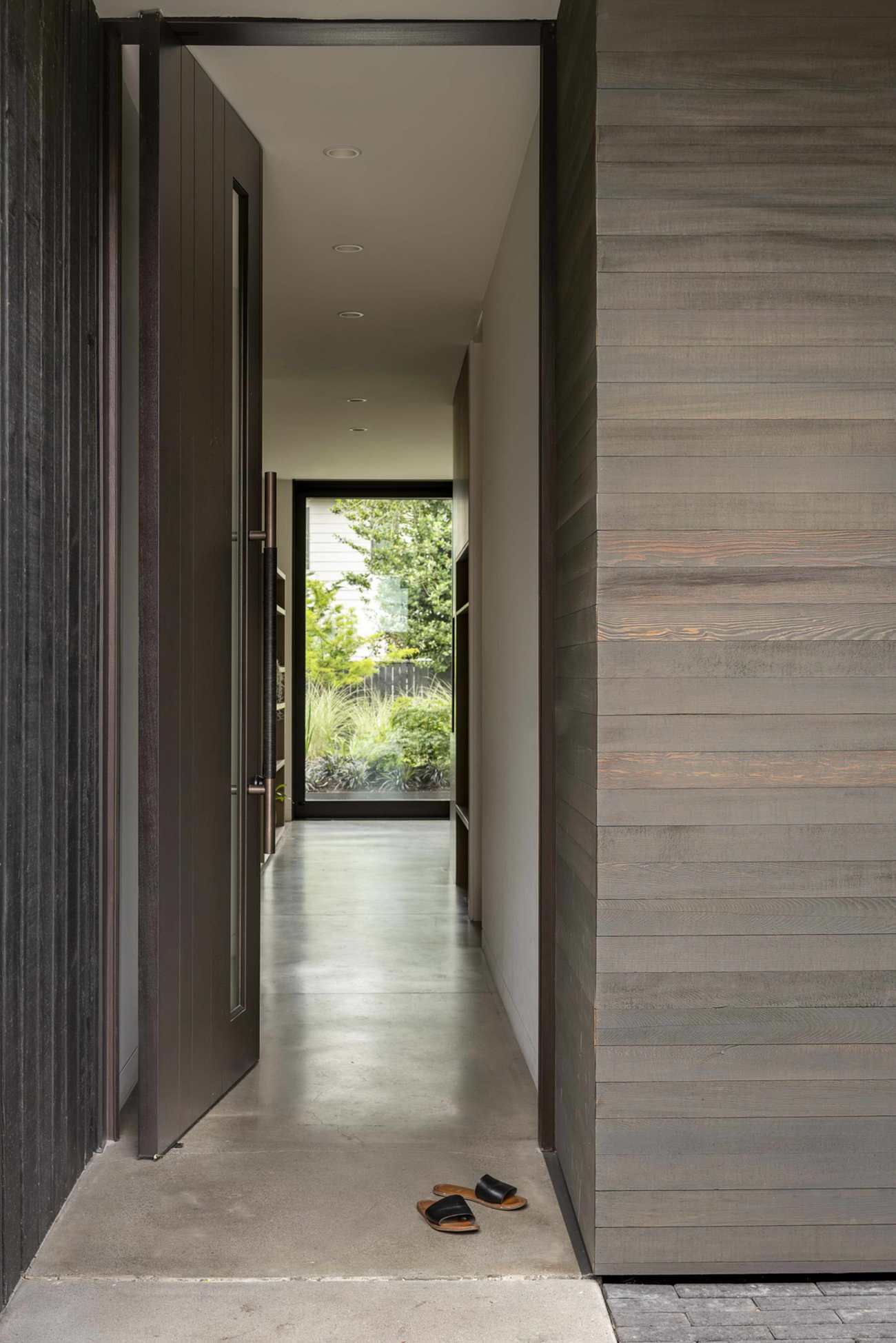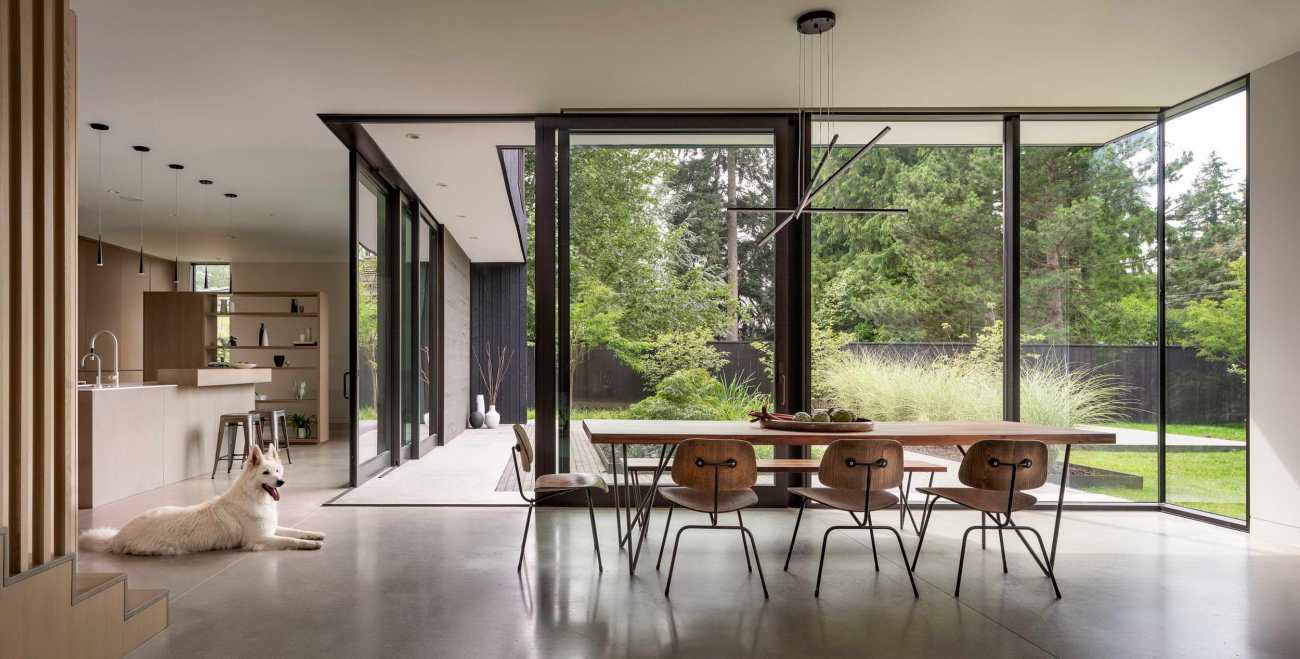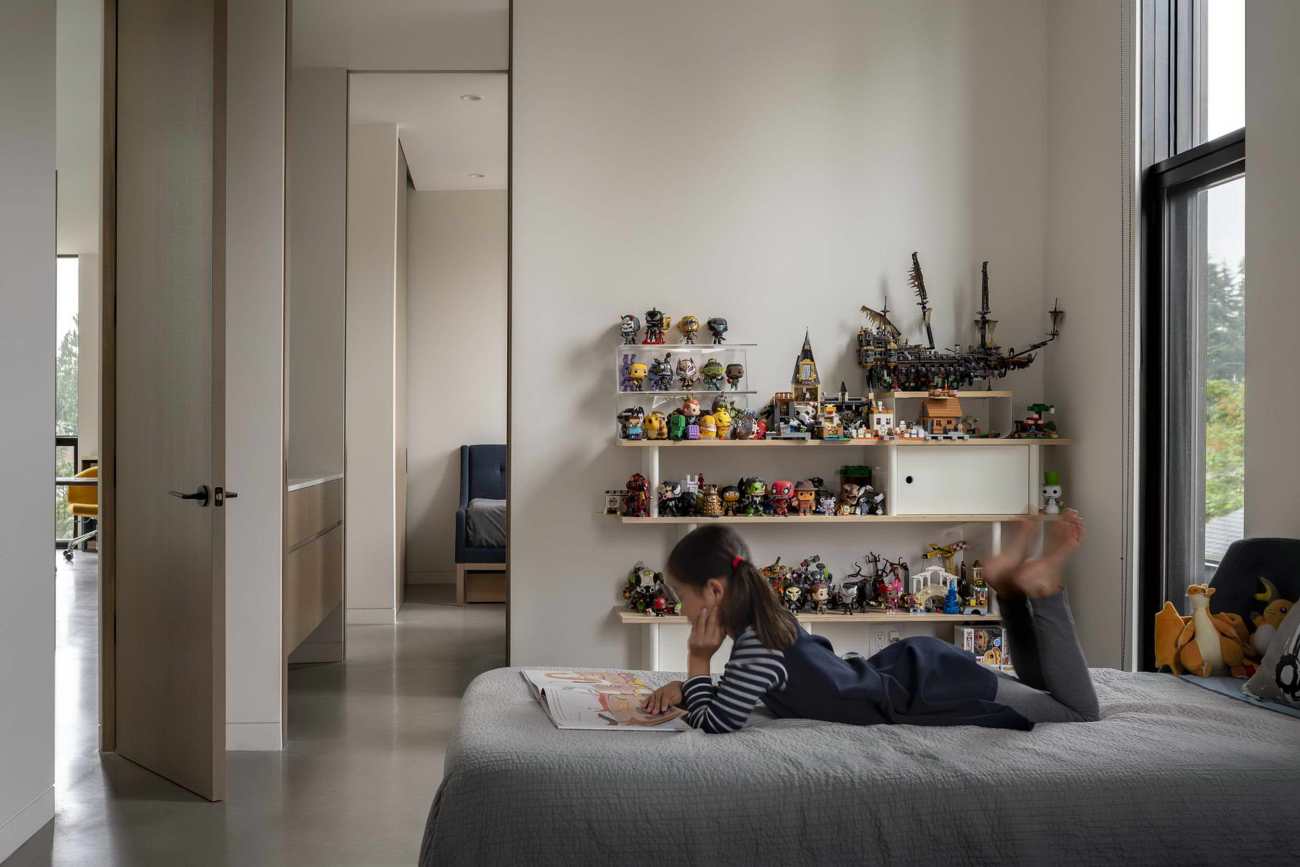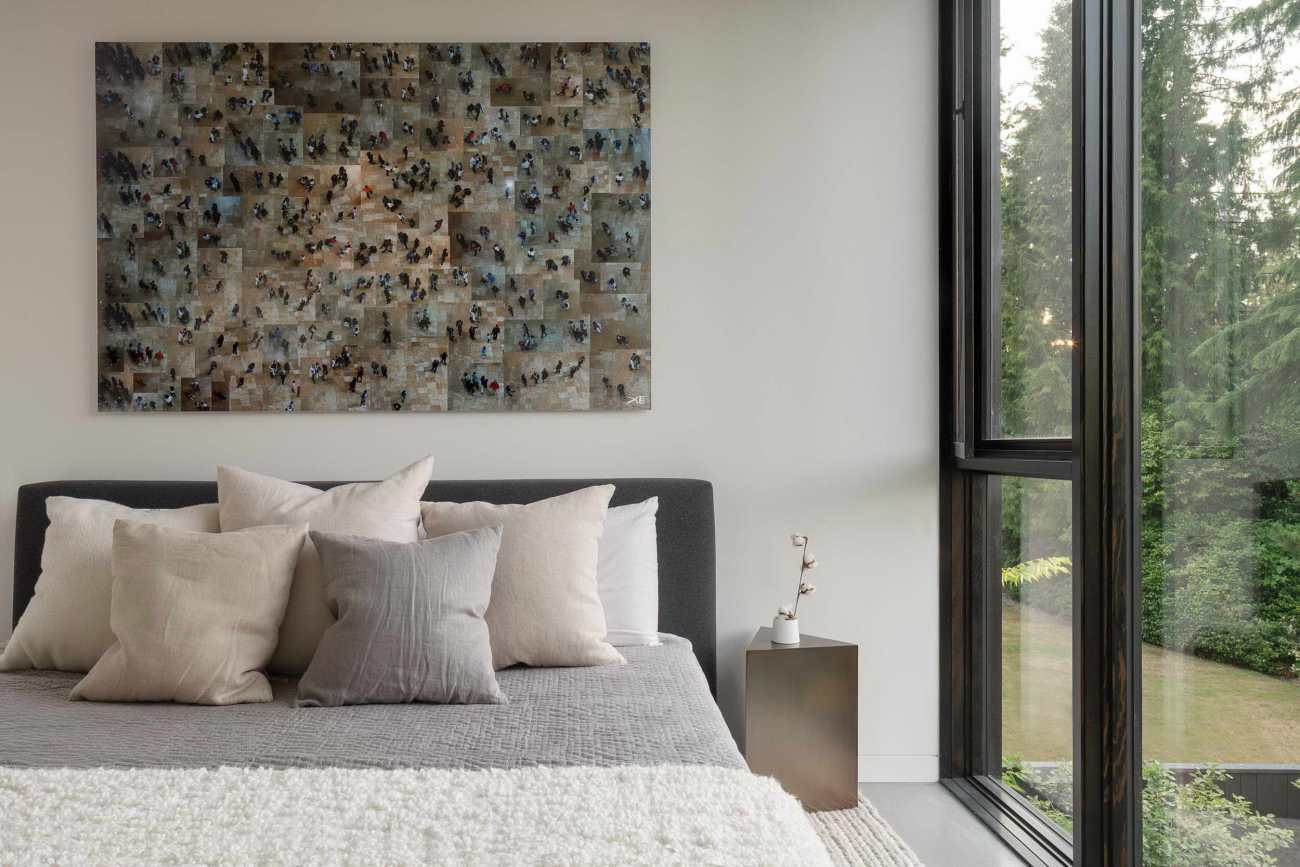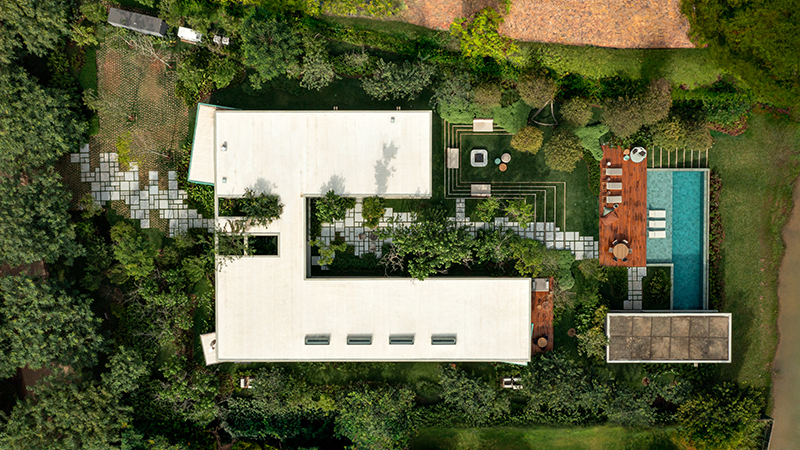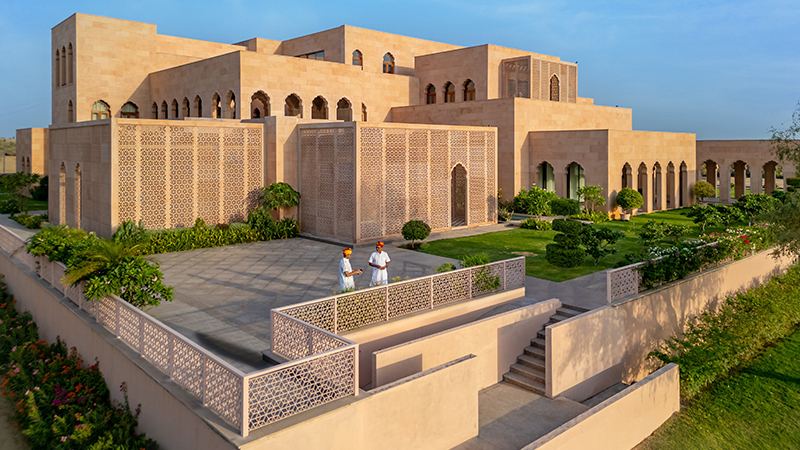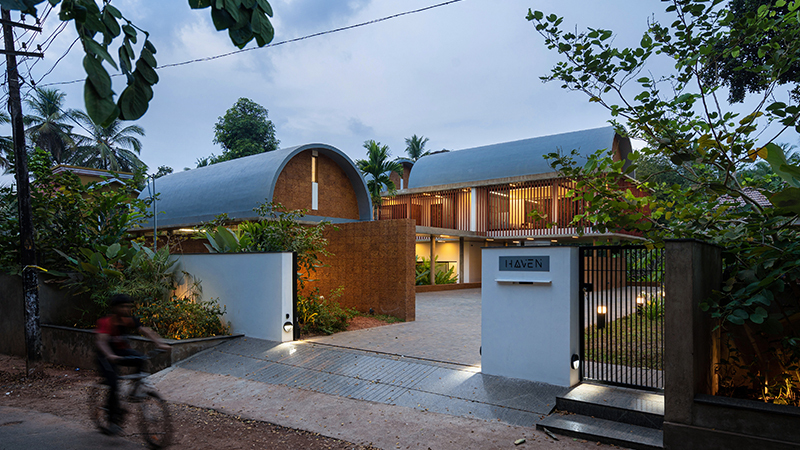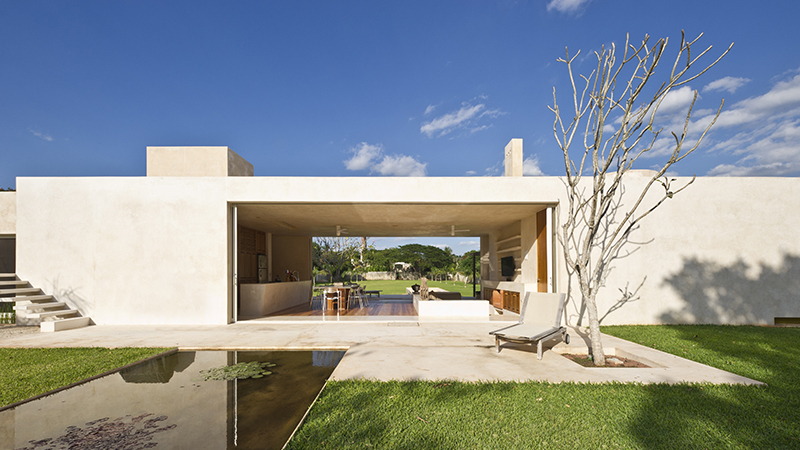| 公司: | Matt Wittman | 类型: | 建筑 |
|---|---|---|---|
| 地区: | 美国 | 标签: | 别墅私宅 |
幽居庭院住宅的设计灵感来源于中国传统的园林设计。在西澳州克莱德山繁华的城市街道上,一栋庭院式的房子成为一个安静的避难所。当城市变得密集,私密性变得有限时,郊区独栋别墅会怎样?它必须向内看。通过一系列从不透明到透明的门槛,幽居庭院住宅(中文意思是 "隐蔽的生活"),尽管紧邻贝尔维尤市Clyde Hill社区的一条繁忙的主干道,但通过建立一种私人体验,拥抱了未来的郊区密度。
Yo-Ju Courtyard House is inspired by traditional Chinese garden design. A courtyard house makes a quiet refuge along a busy urban street in Clyde Hill, WA. What happens to the suburban single-family home as cities become dense and privacy becomes limited? It must look inward. Through a series of thresholds from opaque to transparent, Yo-Ju Courtyard House, which means “secluded living” in Mandarin Chinese, embraces the future of suburban density by establishing a private experience despite being adjacent to a busy arterial street in the Clyde Hill neighborhood of Bellevue.
建筑师将房子向内而不是向外看,以解决未来密度的挑战--与孩子们一起玩耍的交通增加的危险、噪音污染和自然植被的减少。建筑师Matt Wittman说:"这栋房子借鉴了 "中国庭院和花园设计的传统,以及中国山水画技术的基本理念,重新思考传统的单户住宅"。
Home to an active family with three young children, the architects addressed the challenges of future density—the danger of increasing traffic with playful children, noise pollution, and decreased amount of natural vegetation—by having the house look inward instead of outward. The house draws upon the traditions of “Chinese courtyard and garden design, along with the ideas underlying Chinese landscape painting techniques, to rethink the traditional single-family home” says architect Matt Wittman.
围绕庭院设计
设计分为三个元素。1)入口庭院,与繁忙的东北24街隔绝;2)房屋生活体量,向街道呈现不透明的立面,向后方呈现透明的立面;3)花园庭院,由后院的隐蔽区域组成,孩子们可以在此自由玩耍。庭院住宅连接了空间与自然。入户庭院作为街道与室内的门槛,起到了一定的作用。一道沾满黑色的紧结雪松栅栏标志着下一个过渡,一条水泥路穿过草床和一棵日本枫树。在幽静的花园庭院内,所有城市生活的迹象都消失在厨房的橡木窗扉、混凝土地板和落地推拉门内。
Designing around Courtyards
The design is organized in three elements: 1) the entry courtyard, which is screened from busy NE 24th Street; 2) the house living volume, which presents an opaque facade to the street, and a transparent facade to the rear; and 3) the garden courtyard, which is composed of a secluded zone in the rear yard where children can play freely. The courtyard house connects space with nature. The entry courtyard functions as a threshold between the street and the interior. A black-stained, tight knot cedar fence marks the next transition as a concrete path moves through a bed of grasses and a Japanese Maple tree. Inside the secluded garden courtyard, all signs of urban life disappear within the oak casement of the kitchen, concrete flooring, and floor-to-ceiling sliding doors.
通过营造大空间的错觉,无缝过渡到室外景观,房子使用的占地面积比分配的少了三分之一。中国山水画采用了 "大气透视 "技术,以增强空间深度的感知。马特-维特曼说:"项目用这种技术创造了 "视觉上比实际存在的空间更大的空间--眼睛标记了橡木楼梯的水平,然后是大推拉门,最后到达花园庭院的后面"。这种空间效率有助于塑造郊区住宅的新模式--减少占地面积,最大限度地节约能源,增加种植面积,提高私密性,欣赏自然景观。
By creating the illusion of large spaces that seamlessly transition to outdoor views, the house used one third less of a footprint than was allotted. Chinese landscape paintings employ a “atmospheric perspective” technique to enhance the perception of depth of space. Yo-Ju uses this technique to create “visually larger spaces than what actually exist—the eye marks the level of oak stairs, then the large sliding doors, finally reaching the garden courtyard beyond,” says Matt Wittman. This spatial efficiency help shape a new model for suburban housing—a decreased footprint that allows for maximum energy savings and increased planting area, privacy, and views into nature.
公共与私密
"这栋房子使用了两个主要的程序区域来塑造隐私和社区的层次,"Matt说,那是 "受中国古代园林设计原则的启发,即所谓的'大隐隐于市'。" 公共空间在房子的中心开辟,而私人空间则位于房子的前部,分两层。隐藏在私密区域的上层,围绕着一家三口的孩子布置了一个工艺和教学空间。在公共空间中,房子打开后是休息室和厨房,然后是主要的起居和餐厅。这些公共区域围绕花园庭院布置,开放的角门将所有空间连接在一起。通过植根于庭院、过渡程序区和借景的设计,悠居庭院住宅旨在创造一种全新的独户住宅模式。
Public / Private
“The house uses two major program zones to shape layers of privacy and community,” Matt says that were “inspired by an ancient Chinese garden design principle known as ‘Big Hide.’” The communal spaces open up in the center of the house while the private ones are situated at the front of the house on two levels. Hidden in the private areas, the upper floor is arranged around a craft and teaching space for the family’s three children. In the communal spaces, the house opens up to the lounge and kitchen, and then onto the main living and dining. These public areas are arranged around the garden courtyard, with open corner doors that connect all the spaces together. Through design rooted in courtyards, transitional program zones, and borrowed views, the Yo-Ju Courtyard House aims create a new model for single-family housing.
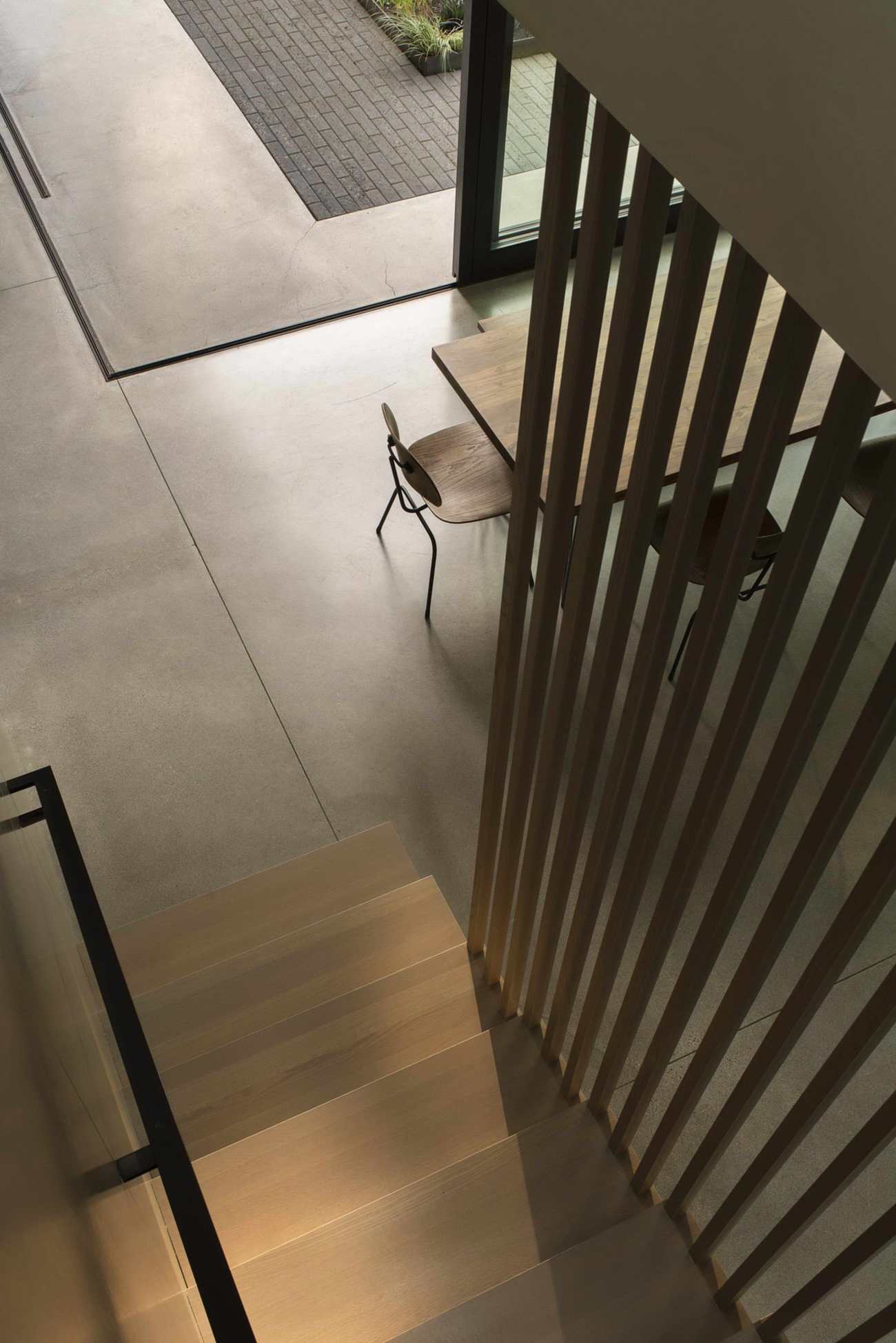 | 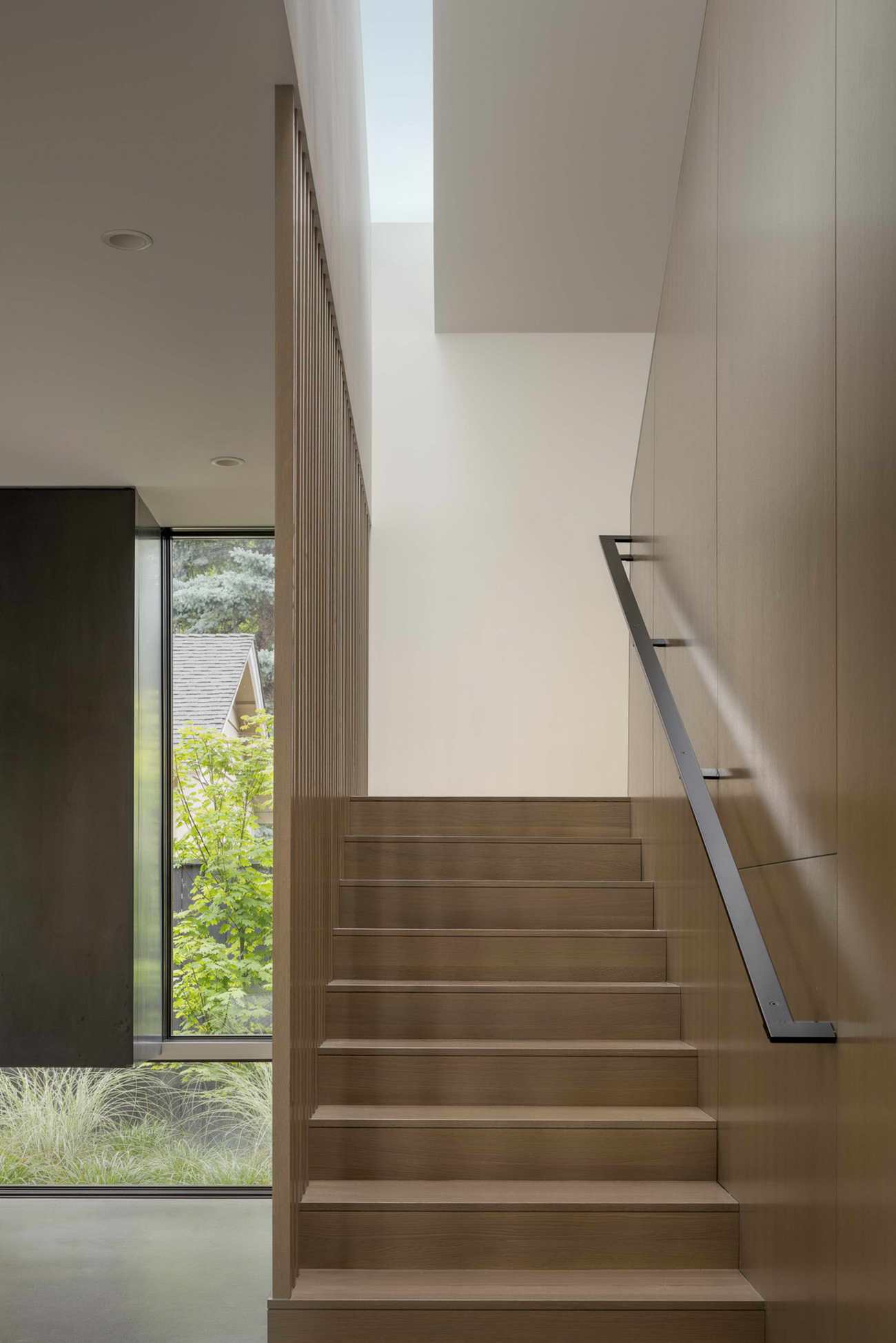 |
▽平面图 Plan
▽剖面图 Section
Architect: Wittman Estes Architecture+Landscape
Design Team: Matt Wittman AIA LEED AP, Jody Estes, Ashton Wesely
Structural Engineer: Malsam Tsang Structural Engineering
Builder: DME Construction Inc.
Kitchen: Henrybuilt
Photo credit: Andrew Pogue
更新日期:2020-12-04 13:35:08
非常感谢 Matt Wittman 带来的精彩项目, 查阅更多Appreciations towards Matt Wittman for sharing wonderful work on hhlloo. Click to see more works!

